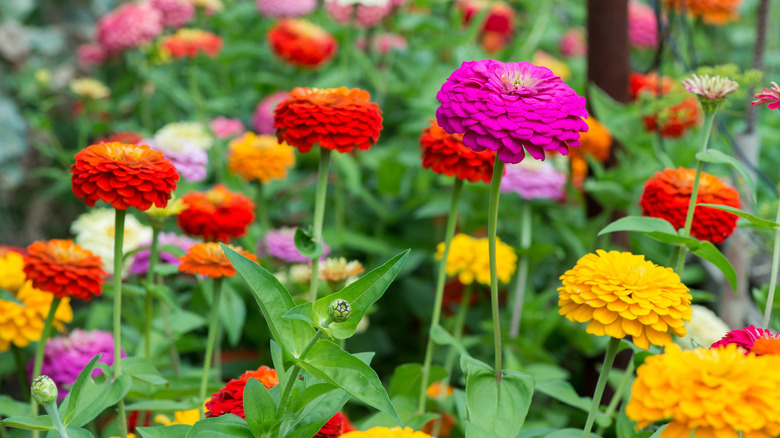How To Identify Zinnia Pests You Never See During The Day
Zinnias are regularly considered one of the easiest flowers to grow, but it may not seem that way if every morning you wake up to find more and more damage to your zinnia plants. With no perpetrators in sight, you'll have to examine your plants and search for clues to discover who has been damaging your zinnias and how best to stop them. Slugs and snails, earwigs, and even deer are all common culprits.
To figure out what happened to your zinnias, you'll have to search for clues. Check around the plant. If you notice shiny, slimy trails, that's a good sign that your problem is caused by slugs or snails. Slugs and snails also tend to cause jagged holes in the leaves instead of completely removing them or leaving clean cuts.
If you suspect slugs and snails are the problem, try placing a wooden board next to your zinnia patch. In the morning, check under the board. It will likely be teeming with the little critters. Submerge them in soapy water if you want to ensure they won't return to your zinnia patch. There are also some common gardening mistakes that can attract slugs, so avoid overwatering your garden, and remember to check under your flower pots regularly to make sure they aren't turning into a breeding ground for slugs or snails.
Other nocturnal zinnia pests
Unlike with slugs and snails, earwigs don't leave a slimy trail; instead, you may notice their small, dark droppings on or around your zinnias. If earwigs are behind the damage, you'll also likely notice jagged holes in leaves. Try making a DIY trap to keep earwigs out of your garden. While there are several ways to make these, any moist, rolled up paper left in the garden is likely to work well. Then, just empty the trap into soapy water. Don't worry about any rumors or urban legends you may have heard about earwigs biting or climbing into people's ears; the little insects are a menace in the garden, but they're harmless to people.
If slugs and earwigs aren't the cause of your zinnia damage, then it's possible that a significantly larger animal is to blame. Deer often eat leaves of plants, and the damage they cause can look quite a bit different from what you'd see with smaller animals. Deer often eat entire leaves, leaving behind just a sad looking stem. You may also notice their droppings nearby, which are quite a bit larger than anything you'd find from an earwig. While there are a lot of ways to keep deer out of your yard, the easiest solution is sometimes to simply grow flowers like zinnias in a fenced in area. Just remember that this fence will need to be a minimum of 6 feet so deer can't jump over it.

